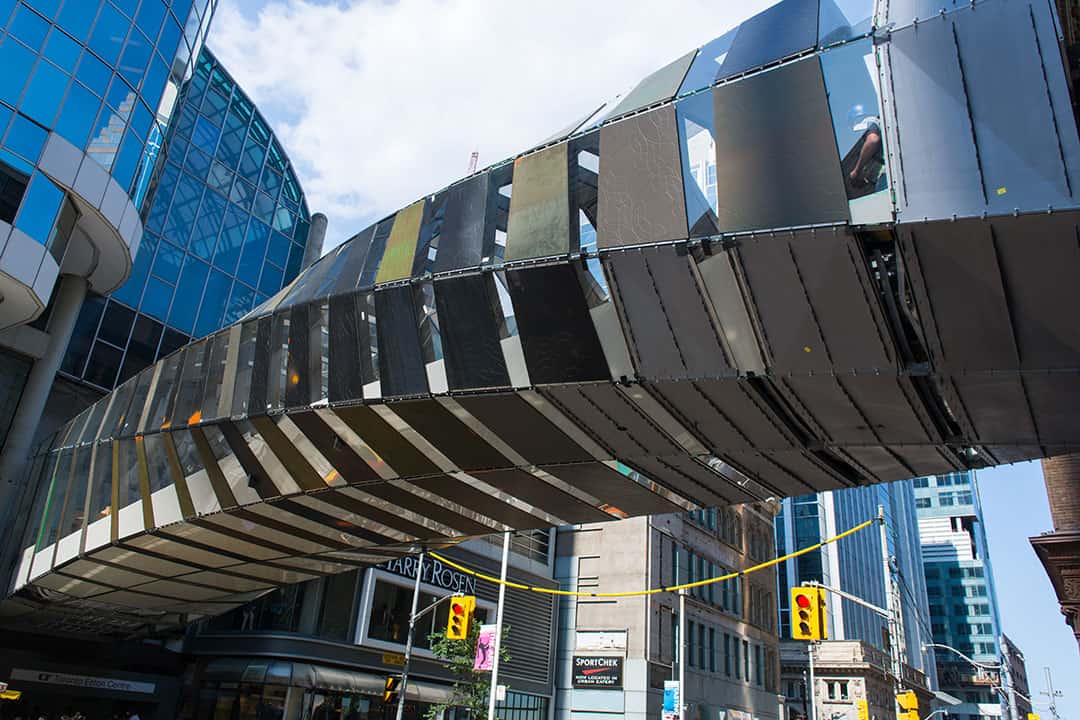This past July, much to the world’s bewilderment, Ontarians feasted their eyes on a giant rubber duck floating on the waters of Lake Ontario. As part of the Celebrate Ontario program and festivities related to Canada 150, the inflatable bird toured the province, stopping at Toronto’s Waterfront on Canada Day and eventually reaching towns such as Owen Sound and Sault Ste. Marie.
The exhibit, a copy of a Dutch artist’s work, was brought to Ontario with a price tag of $200,000, for which the province contributed around $120,000. Prior to its presentation, this price tag became a significant focal point, opening up the continuing debate surrounding the appropriateness of using public funds for ‘public art’ — a term used here to refer to any sculpture, mural, or visual piece occupying community space.
Along with Ontario’s rubber duck, a number of high-profile, highly expensive public art projects can be found across the country. A controversial $500,000 art installation displayed along the Trans-Canada Highway in Alberta sparked a similar debate this past month, when its merits were called into question given its substantial cost. Other initiatives made possible through the use of public funds include subway art pieces approved by the Toronto Transit Commission (TTC) and the Great Art for Great Lakes projects.
We shouldn’t be so quick to dismiss the utility of these projects by looking exclusively at their initial accumulated price tag. Instead, we should take a holistic view and observe other economic and societal indicators, as well as the rejuvenation these projects bring to society.
Firstly, public art projects often have substantial economic returns. The Eiffel Tower, owned and commissioned by the City of Paris, was initially constructed to be a temporary exhibit for the 1889 World’s Fair. Costs during the period of construction from 1887 to 1889 accumulated to about 7,799,401 gold Francs; additionally, many Parisians feared the structure was unstable and considered it an eyesore. Nevertheless, the tower is now the icon of the country and worth roughly $545 billion USD to the French economy.
The New York City Waterfalls, funded in 2008 by the non-profit organization Public Art Fund, ran at a cost of $15.5 million USD but brought in an estimated $69 million USD for the city that year, exceeding projected economic expectations.
Similarly, the aforementioned monstrous waterfowl broke attendance records for Canada 150, with over 750,000 people coming to visit the exhibit over the Labour Day long weekend. The duck incentivized Ontarians to spend their time and money at the lakeshore, and as a result, neighbouring businesses and kiosks were packed with lineups of people waiting to purchase their products. Organizers of the Redpath Waterfront Festival are expecting that the 2017 economic impact of the event will exceed $4.2 million.
Here, as with any good investment, public funds contributed to public well-being as well as increased economic activity. This is especially important for a location like the Toronto Waterfront, which has had trouble winning over the hearts of the public in previous years.
The presence of public art also has the potential to rejuvenate an urban area. For example, the new public art concepts that were approved for seven stations across the TTC network in July will help to breathe new life into transit stations across Toronto — including King Station, which has been around for over 50 years. Public art aims to make our lives less mundane, and it brings new perspective to familiar settings along the daily commute. As one of the TTC art consultants Helena Grdadolnik told the Toronto Star, transit art can “help stitch the station back into the community.”
The Great Art for Great Lakes project has similar aims. With financial support from the provincial and federal governments, several projects in Ontario municipalities are using art to connect communities to their nearby Great Lake.
“Public art brings so much more to a community than the room it takes,” Manitoban artist Charles Johnston wrote in an email to The Varsity. “[It] anchors people, creates identity. It makes people feel safe… It creates value [and] beauty where before it was absent.”
Throughout his artistic career, Johnston has contributed murals and sculptures to Winnipeg. His pieces, including a sculpture of World War II hero Andrew Mynarski VC, have been funded through a mixture of private and government funds.
“When done right, a piece of public art becomes a landmark — an icon that may rally people together,” Johnston wrote. “At the very least it’s a dialogue between the artist and the community… a dialogue that leads a community to define its values and understand itself better.”
Understandably, taxpayers have a right to hold their government accountable for its budgetary decisions. However, using public money to fund public art projects should be seen in terms of the bigger picture: these projects can result in substantial economic benefits and revitalize the community spaces they occupy.
Ian T. D. Thomson is a 2018 Master of Public Policy Candidate at the School of Public Policy and Governance.


